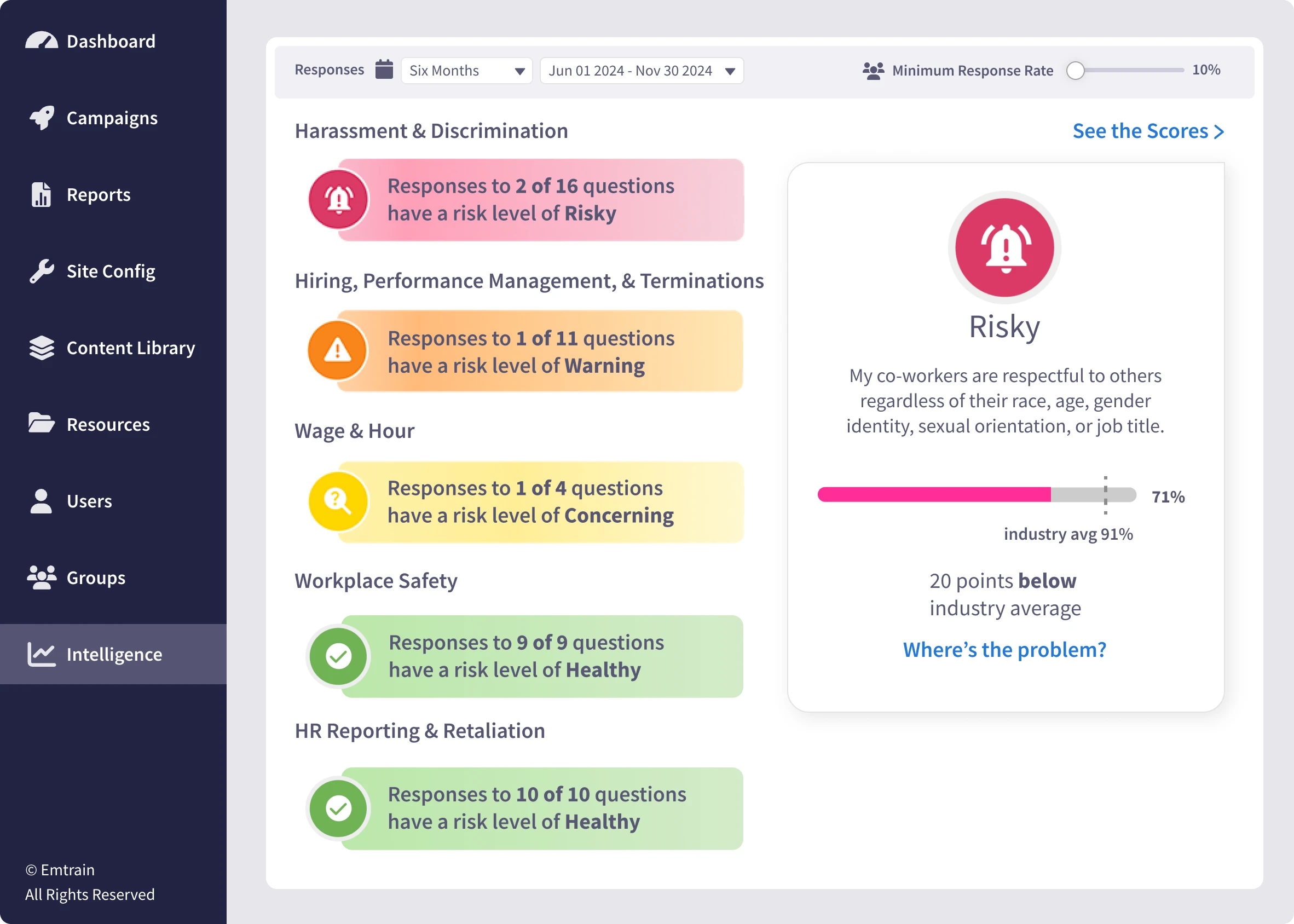Home » Concepts » Ethics & Compliance » Horizontal competition vs. vertical competition
Horizontal competition occurs between companies at the same level of the supply chain, such as two competing retailers or two manufacturers offering similar products. Vertical competition, by contrast, takes place between companies at different stages of the supply chain — for example, a manufacturer and a retailer — competing over control, pricing, and influence over consumers.
Emtrain’s harassment training course is engaging, interactive, and designed to spot and reduce EEO risk.

Antitrust and competition laws emerged in the late 19th and early 20th centuries, driven by concerns over monopolistic practices and the consolidation of market power. The U.S. Sherman Antitrust Act of 1890, for example, aimed to prevent collusion and unfair competition among businesses at all levels of commerce.
Today, understanding both horizontal and vertical competition is essential for modern organizations navigating complex supply chains and regulatory frameworks.
Horizontal competition example:
Two sales managers from competing pharmaceutical companies selling similar drugs target the same client base. If they agree to divide territories to avoid competing directly, this would violate antitrust laws.
Vertical competition example:
A retailer pressures a supplier to offer exclusivity or to limit supply to competing retailers, effectively harming competition at multiple supply chain levels.
In horizontal scenarios, competitors might collude to fix prices or limit supply, forcing consumers to pay higher prices for fewer choices.
In vertical scenarios, a dominant manufacturer might impose unfair pricing terms on retailers, leading to artificially inflated prices or reduced availability for consumers.
Retailers may leverage their position to demand lower wholesale prices, threaten delisting a supplier’s products unless concessions are made, or require slotting fees for premium shelf placement. Such practices can disadvantage smaller manufacturers and distort fair competition.
Blog: Employee Q&A: Antitrust Compliance Edition
Learn how employees can spot red flags, avoid risky agreements, and comply with antitrust laws.
Checklist: Global Anti-Bribery and FCPA Compliance Checklist
A practical tool to help organizations identify and mitigate anti-bribery and corruption risks globally.
Microlesson: Antitrust and Colluding with Competitors
Short, focused training that teaches employees how to recognize unethical competitor proposals and respond appropriately.
Video Preview: Navigating Supply Chain Issues
Two sales reps meet to discuss supply chain challenges. One suggests passing costs to consumers by raising prices — a potential antitrust violation.
Looking for training that addresses horizontal and vertical competition? Sign up today for a demo of our Antitrust Compliance & Competition Training.